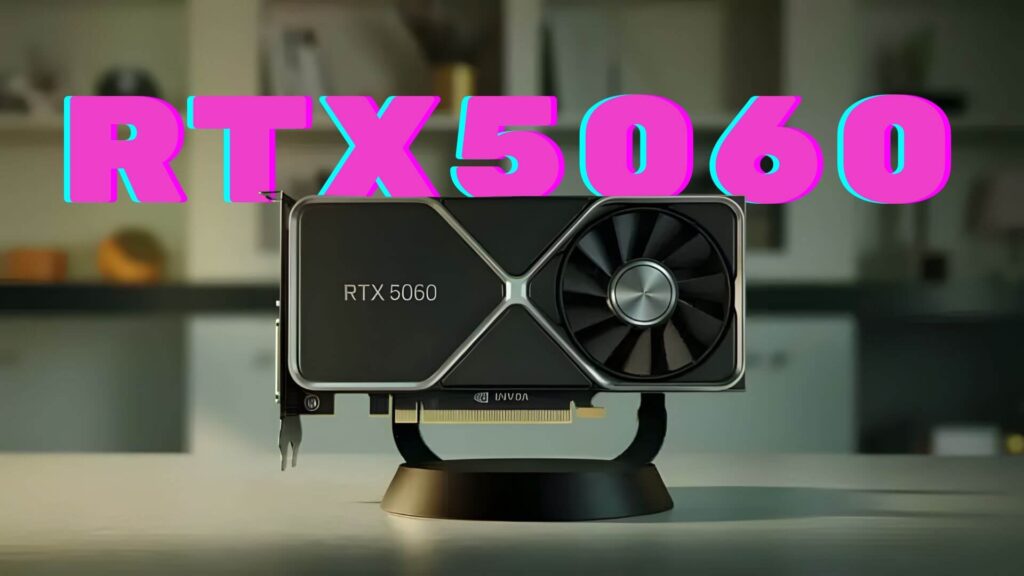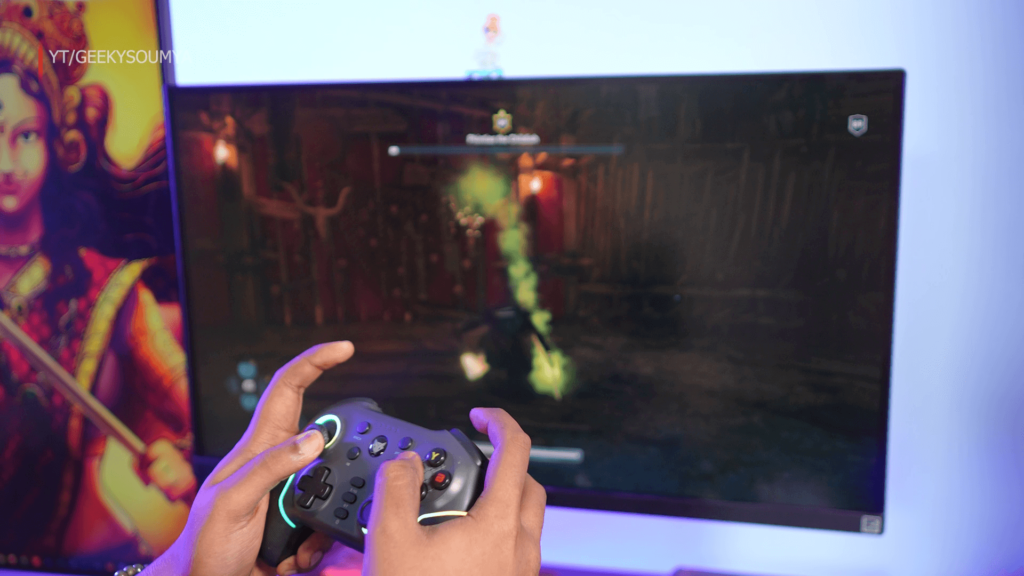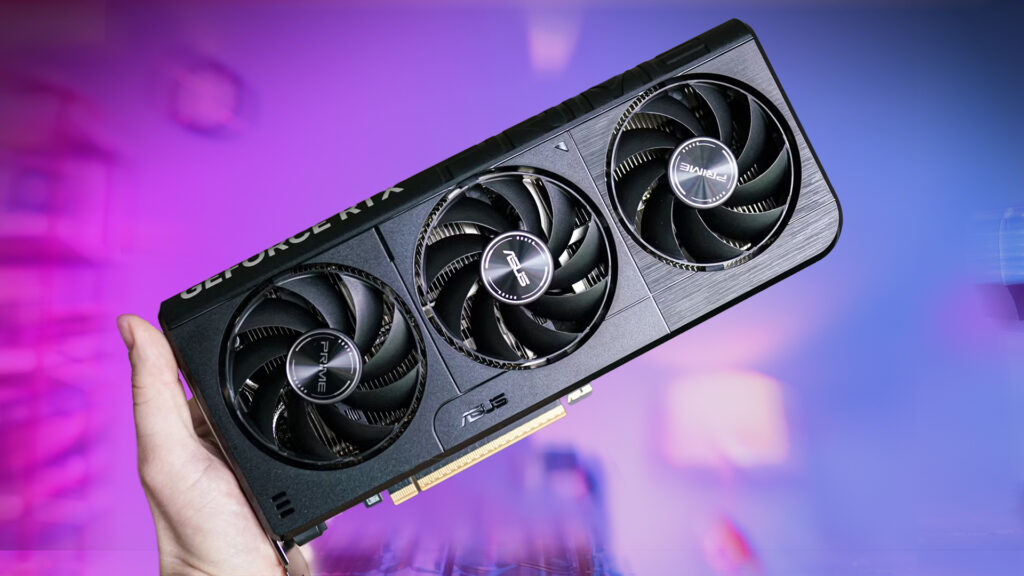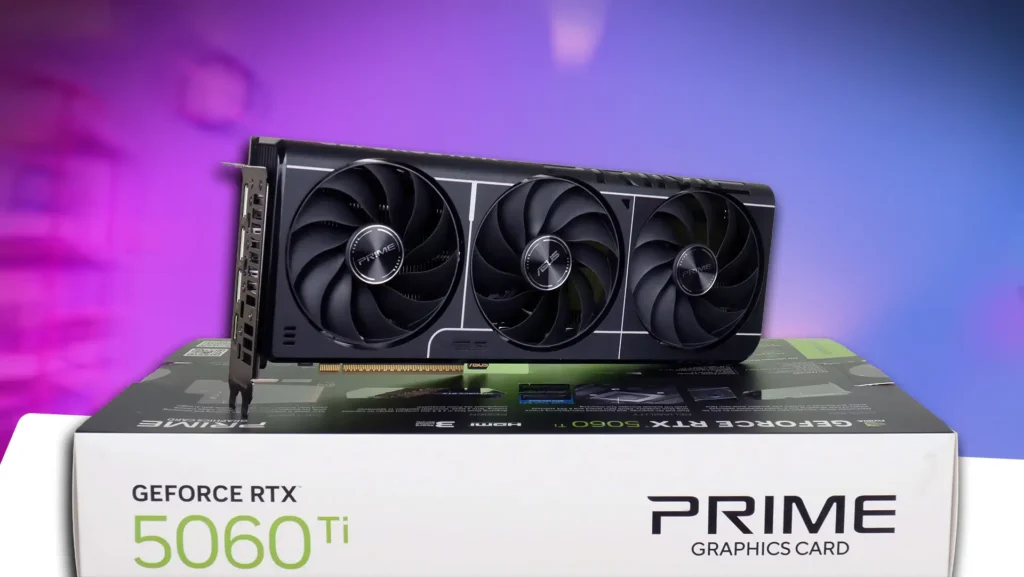With new GPU launches each year, gamers and content creators are constantly asking: “Is this the right time (and price) to upgrade?” The NVIDIA RTX 5060 8GB, available at around 32,000 Rs. in South Asia, is the latest in the budget-friendly yet powerful category. But is it actually worth your hard-earned money in 2025?
Let’s dig into the facts, benchmarks, user sentiment, and real-world performance to help you make an informed decision—even if you’re just casually interested in the latest tech.

Price & Availability
The RTX 5060 8GB has been making waves in the South Asian market thanks to its accessible price, hovering around 31,000-33,000 Rs. (sometimes varying based on local taxes and stock). While this appears tempting given the “next-gen” tag, launch pricing and current availability often fluctuate depending on supply chains and global demands. Always check local retailers and platforms like Prime ABGB, Vedant Computers, or MDComputers for up-to-date stock and pricing.

Core Specifications
When evaluating any graphics card, specifications matter as much as real-world experience. Here’s a quick rundown:
| Feature | Details (RTX 5060 8GB) |
| GPU Architecture | NVIDIA Blackwell |
| VRAM | 8GB GDDR7 |
| CUDA Cores | 3,840 |
| Memory Speed | 28Gbps |
| Bus Width | 128-bit |
| Ray Tracing | Yes (4th Gen RT cores) |
| DLSS | DLSS 4 AI Upscaling + FG |
| Output Ports | 3x DisplayPort, 1x HDMI |
| PCIe Version | 5.0 |
| Power Draw | ≈130W |
| Target Use | 1080p High, 1440p Medium |
These specs promise a balance between performance and efficiency, mostly aimed at mainstream gamers and streamers.
Real-World Performance
1080p Gaming:
When it comes to 1080p gaming, the RTX 5060 8GB truly shines. In fast-paced esports titles such as Valorant, Counter-Strike 2, Rocket League, and DOTA 2, users consistently experience smooth gameplay well above 120 FPS, making it a top choice for competitive players. These games are optimized for performance and run effortlessly on this GPU.
For more demanding AAA games like Hogwarts Legacy, Cyberpunk 2077, or Resident Evil 4 Remake, the card holds its own when settings are kept at medium to high, especially when DLSS (Deep Learning Super Sampling) 4 is enabled. DLSS allows the GPU to upscale lower-resolution images to look nearly native, helping maintain stable frame rates without significantly compromising visual quality. I am giving you a chart of how latest games are perform in this card.
| Game | Ultra/High Settings (1080p) | Notes |
|---|---|---|
| Cyberpunk 2077 | 75–90 FPS | Slight stutter at ultra, high is smoother. |
| GTA V | 110–130 FPS | Exceptionally smooth. |
| Call of Duty MW3 | 90–110 FPS | High settings, runs very well. |
| Apex Legends | 150–180 FPS | At high, esports-level frame rates. |
| Valorant | 235–300 FPS | No issues, eSports ready. |
| Red Dead Redemption 2 | 70 -75 FPS | On high, ultra can dip. |
| Forza Horizon 5 | 90–108 FPS | Great for racing fans. |
| Spider-Man Remastered | 80–95 FPS | High, some drops with RT. |
| Hogwarts Legacy | 52–65 FPS | High, ultra can dip to 44–50 FPS. |
| Rainbow Six Siege | 230–260 FPS | Consistently high. |
| Assassins Creed Valhalla | 68–78 FPS | Ultra, mostly stable. |
| Counter-Strike 2 | 250+ FPS | eSports-level. |

Esports & Competitive Titles (Valorant, CS2, Apex Legends):
The RTX 5060 performs exceptionally well in fast-paced multiplayer shooters. Titles like Valorant, Counter-Strike 2, and Apex Legends consistently deliver 150–300+ FPS, depending on settings and CPU pairing. This makes the card an excellent match for high refresh rate monitors (144Hz to 240Hz) and ensures ultra-smooth, responsive gameplay for competitive players.
AAA Games (Cyberpunk 2077, Hogwarts Legacy, RDR2):
In modern, graphics-intensive AAA titles, the RTX 5060 holds up respectably at high settings:
- Average FPS ranges between 55–70 FPS, offering a smooth experience for most players.
- However, enabling ultra settings or ray tracing can cause dips or micro-stutters, especially in open-world or texture-heavy environments, due to the 8GB VRAM limitation.
To maintain consistent performance, many users opt for DLSS and a mix of medium-high settings instead of pushing for max visuals.
DLSS 4 & Ray Tracing: Real-World Gains
The inclusion of DLSS 4 makes a significant impact in supported games. With DLSS enabled:
- Users see a 20–50% performance boost, often achieving 60–100 FPS even with some ray tracing features turned on.
- However, playing at native resolution with ray tracing set to Ultra is not ideal—frame drops become noticeable unless you lower resolution, texture quality, or lighting settings.
DLSS helps maintain visual fidelity while boosting performance, making it a valuable tool on this GPU.
Future-Proofing & Upcoming Game Performance
As newer, more demanding titles continue to release, the RTX 5060 is expected to hover slightly above or below 60 FPS at high settings in most cases. For smooth gameplay in such titles:
- DLSS or FSR will likely become essential.
- Gamers may need to settle for balanced or medium-high graphics presets to avoid VRAM-related bottlenecks.
While the card is well-suited for today’s games at 1080p, those looking for long-term 1440p or ultra-settings performance might find the 8GB VRAM a limiting factor going forward.
1440p Performance:
While the RTX 5060 is marketed as a 1080p card, it can stretch into 1440p gaming territory—but with limitations. In older or well-optimized games like GTA V, Skyrim, or The Witcher 3, you can enjoy a decent experience even at high settings.
However, in newer or more demanding titles like Starfield, Alan Wake II, or The Last of Us Part I, the 8GB VRAM ceiling becomes a noticeable bottleneck, particularly in large open-world environments or scenes that use high-resolution textures. You may face stutters, slower texture loading, or performance dips, especially if ray tracing is involved.
DLSS 4 helps to offset some of these limitations by improving frame rates and image quality, but at 1440p, compromises in texture quality
Ray Tracing & DLSS:
Ray tracing is possible on the RTX 5060, but not without sacrifices. Titles like Cyberpunk 2077, Control, or Portal RTX become playable only when DLSS 4 is enabled, often in Performance or Balanced mode.
However, if you attempt to run ray tracing at native resolution with higher texture settings, the card quickly starts to struggle. The GPU’s limited core count and 8GB VRAM mean you’ll need to dial down settings, such as ray tracing quality, reflections, or ambient occlusion, to achieve playable frame rates. Still, for casual ray-traced gaming or experimentation, it’s acceptable.
AI & Creative Features:
Beyond gaming, the RTX 5060 includes features that are valuable for content creators, streamers, and editors. With support for NVIDIA’s latest NVENC encoder, this GPU can handle high-quality video recordings and live streams without stressing your CPU. Whether you’re streaming on OBS, recording gameplay for YouTube, or editing in DaVinci Resolve or Adobe Premiere Pro, performance is smooth and stable.
Additionally, the GPU supports NVIDIA Studio Drivers, which are optimized for creative workloads, and AI-powered tools like video upscaling, background noise removal, and AI-assisted editing. For beginner YouTubers or editors looking to get into content creation on a budget, the RTX 5060 offers a well-rounded platform.

The 8GB VRAM Dilemma: Still Enough?
This is the hottest topic for any current-gen mid-range GPU in 2025. While 8GB VRAM was sufficient two or three years ago, many recent titles now recommend—or even require—higher memory for high textures, mods, and complex lighting. If you’re someone who upgrades once every 4–5 years, this might be a deal-breaker.
- Users frequently report stuttering or “out of memory” errors in demanding AAA titles.
- Frame generation (via DLSS 4) helps smooth visuals but doesn’t solve VRAM bottlenecks when scenes overload the memory.
How Does It Compare to the Competition?
When spending $300–$350, it’s natural to compare.
| Card | VRAM | Performance | Price Range | Notes |
| RTX 5060 8GB | 8GB | Solid 1080p, OK 1440p | 31K–33K Rs. | Most efficient, latest tech |
| RTX 4060 8GB | 8GB | Slightly less than 5060 | 29K–32K Rs. | Cheaper, similar VRAM limit |
| RTX 3060 Ti | 8GB | Similar, sometimes better | 30K–34K Rs. used | Older, sometimes better perf |
| RX 7600 8GB | 8GB | Competes well at 1080p | 29K–31K Rs. | FSR support, less ray tracing |
| RX 6700 XT 12GB | 12GB | Better VRAM for 1440p | 31K–36K Rs. used | Great for future-proofing |
In many cases, AMD’s offerings provide higher VRAM for similar or lower prices, though you may miss out on NVIDIA-exclusive tech like DLSS 4 and better driver stability for streaming and AI tasks.
What Are Real Users & Reviewers Saying?
Praised For:
- Excellent Value for Esports & Streaming:
Many users appreciated the RTX 5060 for delivering solid 1080p performance, especially in competitive esports titles and streaming workloads. It hits the sweet spot for budget-conscious gamers who prioritize smooth frame rates over maxed-out visuals. - Low Power Consumption (~130W):
The GPU’s efficiency was another highlight. Drawing only around 130 watts, it’s ideal for systems with lower-capacity PSUs or compact builds, making it a great choice for those upgrading older rigs without a full overhaul. - DLSS 4 Delivers Noticeable Smoother Gameplay:
Thanks to NVIDIA’s latest DLSS 4 support, users reported significant improvements in frame pacing and overall responsiveness. This feature enhances the playability of more demanding games even on modest hardware.
Criticized For:
- Still Limited to 8GB VRAM in 2025:
In an era where modern titles are increasingly demanding on memory, many gamers felt that sticking to 8GB was a major bottleneck. Open-world and AAA games can suffer from texture pop-ins or stutters due to limited VRAM. - Not Future-Proof for 1440p Gaming:
While capable at 1080p, the RTX 5060 struggles to keep up with current and upcoming games at 1440p, especially when aiming for high settings. This makes it a less viable choice for those planning a long-term upgrade. - Underwhelming for Ultra Graphics or Texture-Heavy Titles:
Users noted that the card falls short when pushed to ultra settings, particularly in texture-heavy or ray-traced environments. It simply doesn’t have the horsepower to handle every game at its best.
🗣 Community Sentiment:
“Feels like NVIDIA played it safe again—this card is decent for budget gamers, but it’s definitely not for those looking to push graphical boundaries.”
Who Should Buy the RTX 5060 8GB?
Ideal Buyer Profiles:
- 1080p gamers (especially esports).
- Streamers or YouTubers just starting out, especially those actively want to go with NVIDIA platform for DLSS and AI tools.
- Users on a strict budget, upgrading from much older GPUs (GTX 1650/1060 class).
Who Should Skip:
- Gamers wanting 1440p Ultra or 4K gaming – AAA titles, now—or in the next 2–3 years—at high/ultra settings.
- Users planning to game at 1440p Ultra or dabble with mods, high-res packs, and upcoming heavier games.
- Those needing 4+ years of longevity

What Reviewers Said:
- Performance is solid at 1080p, especially with DLSS 4 + Multi Frame Generation [PC Gamer]
- The 8GB VRAM limitation is the major drawback—especially in AAA titles at higher resolutions or during frame generation [TechRadar]
- Enthusiasts highlight inconsistency or driver instability affecting experience in certain games [TechRadar]
Frequently Asked Questions (FAQ)
Q1: Is 8GB VRAM enough in 2025?
Ans: It’s enough for esports and casual gaming, but limiting for future AAA titles and mod-heavy gameplay.
Q2: Can the RTX 5060 handle 1440p gaming?
Ans: Light or older games, yes. Newer games need DLSS and medium settings.
Q3: Is the RTX 5060 better than the RTX 4060?
Ans: Slightly, especially in power efficiency and DLSS 4. But the performance gap is minor.
Q4: Does the RTX 5060 support DLSS 4 with Frame Generation?
Ans: Yes, DLSS 4 with Frame Gen is supported and helps smooth performance in supported titles.
Conclusion: Is It Worth Rs 32,000 ?
The RTX 5060 8GB represents a decent improvement in efficiency, DLSS technology, and entry-level ray tracing compared to older cards. But its biggest drawback—only 8GB VRAM—hampers its potential for serious, future-focused gaming. For those focused on value, 1080p esports, or casual gaming, it’s a viable choice, especially if priced at or below 32,000 Rs. For anyone wanting to play visually demanding games for years to come, consider saving a bit more for a card with higher VRAM or stronger raw performance.
